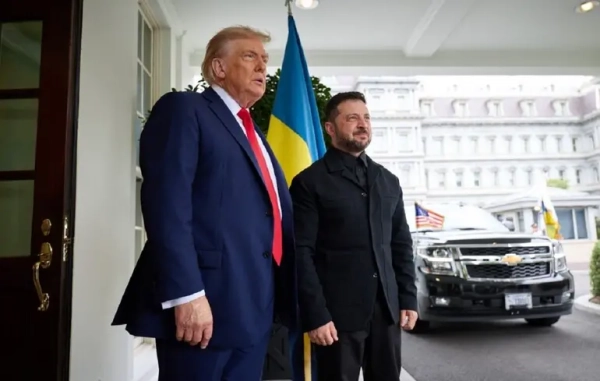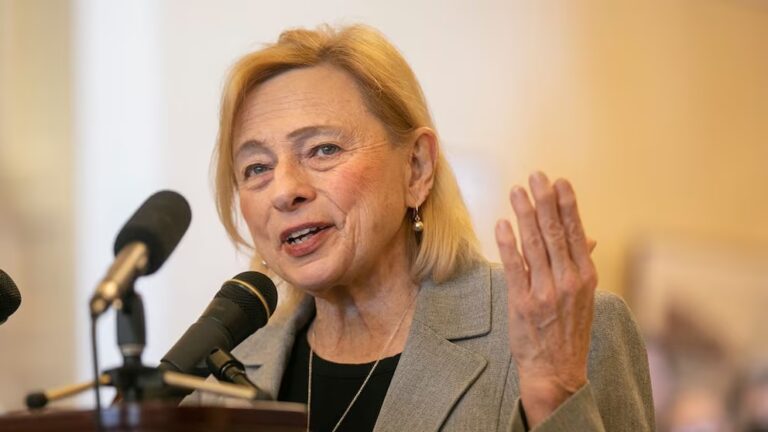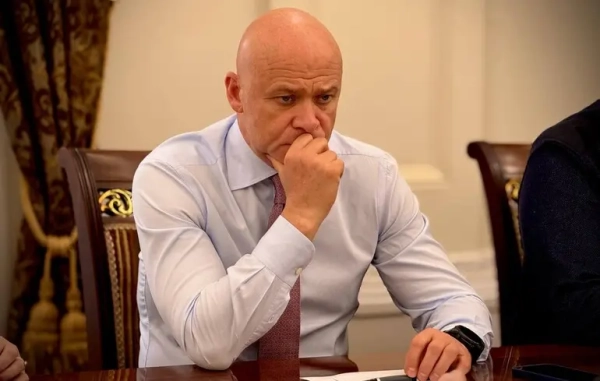One of America’s most important statesmen gave the world a series of diplomatic breakthroughs, and hundreds of thousands of bodies.
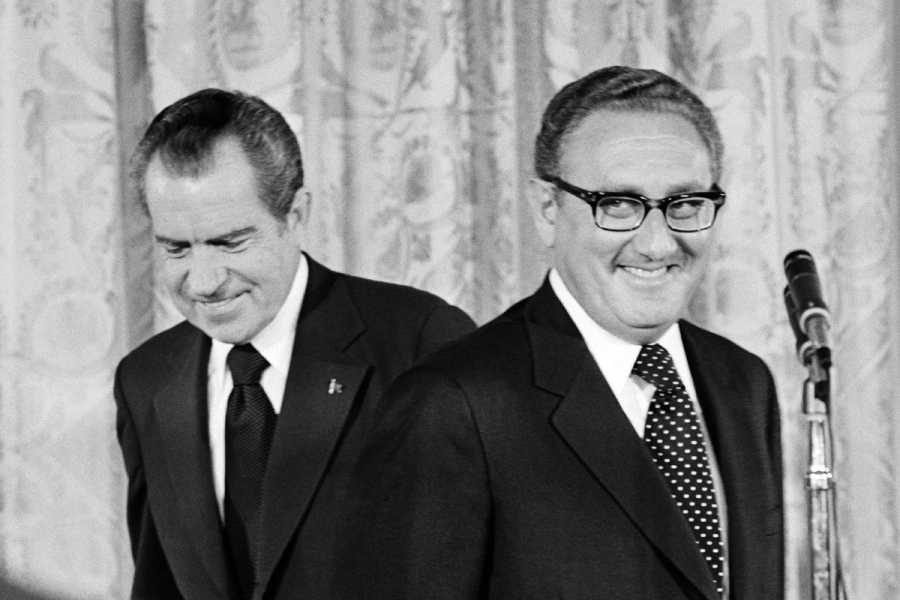
President Richard Nixon and newly appointed Secretary of State Henry Kissinger, in 1973. David Hume Kennerly/Getty Images Dylan Matthews is a senior correspondent and head writer for Vox’s Future Perfect section and has worked at Vox since 2014. He is particularly interested in global health and pandemic prevention, anti-poverty efforts, economic policy and theory, and conflicts about the right way to do philanthropy.
Henry Kissinger, the former secretary of state who crafted foreign policy for Presidents Nixon and Ford, with an eye toward supporting friendly dictatorships that could help the US balance Soviet power, and helped direct a massive bombing campaign killing tens of thousands of Cambodians and Vietnamese, has died. He was 100.
Born to a Jewish family in Weimar Germany in 1923, Kissinger fled to New York City with his family in 1938 at the age of 15 to escape Nazi persecution. He would later fight against his birth country after being drafted into the US Army during World War II. He would retire as a sergeant and earn a Bronze Star for his service.
Before entering government, Kissinger was a tenured professor of government at Harvard. His academic work was influential in expounding a “realist” vision of foreign affairs, where great powers are forced to jockey to advance their material interests to cope with an anarchic international system, and great statesmen are needed to build a global order to prevent war between great powers.
In 1969, Kissinger left academia to serve as Richard Nixon’s national security adviser. In 1973 he became secretary of state, while preserving his earlier title. He continued to serve as secretary of state through the entirety of Gerald Ford’s presidency, though he relinquished the national security adviser title to his protégé Brent Scowcroft in 1975. Throughout, he emphasized support for dictatorships friendly to the US, like Indonesia’s Suharto and Pakistan’s Agha Muhammad Yahya Khan, even as they engaged in wars killing hundreds of thousands of civilians.
Kissinger became well-known for his advocacy of “détente” with the Soviet Union, in which US-Soviet tensions were eased through arms control negotiations and other diplomatic outreach; while Soviet nuclear stockpiles doubled during Kissinger’s time in office, making it hard to argue that détente was succeeding in the near term, the SALT arms control talks he oversaw arguably enabled deeper breakthroughs in the 1980s. Kissinger was most celebrated for helping engineer the US opening to the People’s Republic of China, culminating in Nixon’s historic visit to the country in 1972.
As national security adviser, Kissinger arranged and oversaw a massive expansion of US bombings in not just Vietnam but Cambodia and Laos as well, with a death toll experts estimate at as much as 50,000. Before his time in office, he acted to sabotage peace talks in Paris to end the conflict, but brought those talks to a conclusion in 1973, winning a Nobel Peace Prize. The accord, however, completely failed to end the war, which concluded with a US-South Vietnamese defeat in 1975.
After his tenure in public life ended, Kissinger briefly returned to academia before starting the consulting firm Kissinger Associates, where he offered his deep connections with various political players around the world to businesses willing to pay.
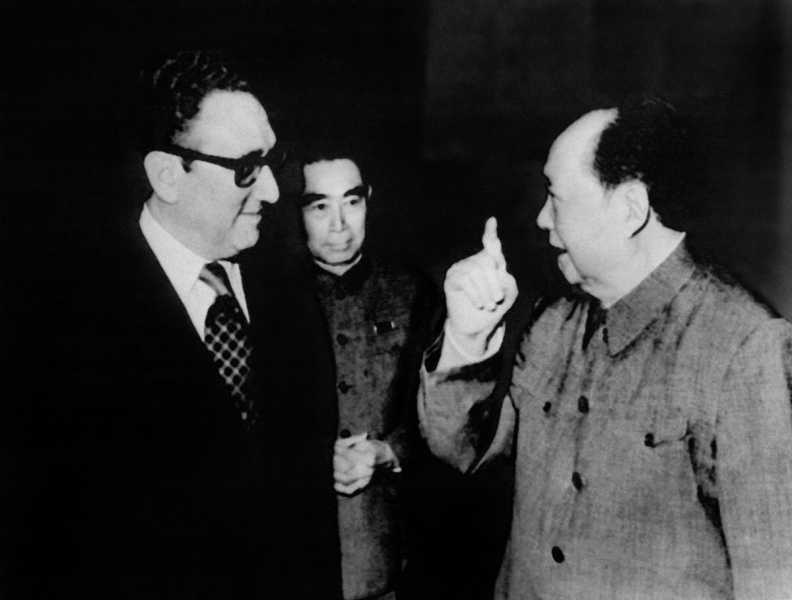
During President Nixon’s administration, Kissinger (seen here with Chinese Communist Party Chair Mao Zedong and Premier Zhou Enlai in 1973) helped open US relations to the People’s Republic of China. Xinhua/AFP via Getty Images
Throughout his career, both before and after his time in government, Kissinger enjoyed an elite status as an oft-consulted foreign policy expert and occasional book author. He lived to see the dictatorships he supported in Chile and Argentina toppled, to see the occupation he enabled in East Timor reversed, and to hear human rights advocates the world over call for his prosecution for war crimes.
Their calls were never answered, but the policies they have identified represent perhaps Kissinger’s most important legacy.
Henry Kissinger supported Pakistan’s genocide in Bangladesh
As Richard Nixon’s national security adviser in 1971, Kissinger was the prime mover behind the US’s choice to quietly back West Pakistan in its campaign against residents of East Pakistan (now Bangladesh), which would claim hundreds of thousands of lives.
Kissinger’s aim was to bolster a friendly regime that also could be a crucial node in his efforts to engage China. While the socialist-inclined India was non-aligned and broadly friendly to the Soviet Union, Pakistan had become friendly with the US and prevented leftist domination of the subcontinent. At the same time, it retained productive relations with Maoist China. That made it an ideal intermediary for Kissinger’s grand plan to realign China with the United States against the Soviet Union, dramatically shifting the global balance of power in the US’s favor.
After Bengali leader Sheikh Mujibur Rahman won the country’s elections on a platform of autonomy for the East, Pakistan’s military ruler Gen. Agha Muhammad Yahya Khan launched a vicious crackdown that included genocide against Bengali Hindus seen as sympathetic to India. Kissinger did not urge Yahya to respect the election results, or complain about the use of US weapons against civilians, or threaten to pull aid to Pakistan.
Instead, he and Nixon conspired to illegally transfer arms to Pakistan, once India entered the war in defense of East Pakistan in December 1971. Kissinger recalled Archer Blood, the top US diplomat in East Pakistan who criticized US backing of Pakistan’s mass slaughter, and sent him to a personnel office in Washington, DC, effectively ending his career as punishment for caring about civilian lives. Throughout the conflict, Kissinger urged inaction, warning internal critics of US policy that even the slightest pressure on its allies in Pakistan would backfire.
Midway through the slaughter, the CIA privately estimated that 200,000 had been killed. A later study using world health survey statistics puts the total at 269,000 violent war deaths. Some 10 million Bangladeshis were forced into India as refugees, and over 200,000 Bangladeshi women were raped as part of an organized campaign of intimidation and terror.
Kissinger and Nixon knew exactly what was going on. In The Blood Telegram, a bracing history of Nixon and Kissinger’s complicity in the killings, Princeton professor Gary Bass relays an astounding conversation where the two entertain a comparison between Pakistan’s genocide and the Holocaust, and still conclude that doing literally anything to stop it would be unwise.
Nixon and Kissinger faced huge pressure to act from Democrats in Congress (notably Sen. Ted Kennedy), from the press, from advocacy initiatives like George Harrison’s Concert for Bangladesh, from the State Department, and from some of Kissinger’s own aides. They still did nothing, a favor that did not go unnoticed by Yahya. “Yahya was effusive in his gratitude to Nixon,” Bass writes. “In a warm letter, he sympathized about the American public pressure that Nixon was withstanding, and insisted that reports of atrocities were Indian-inspired exaggerations.”
Apologists for Kissinger’s support of genocide — like the Bush administration’s ambassador to India Robert Blackwill — argue that standing idly by was necessary because Pakistan helped America’s opening to China. But America’s support for Pakistan preceded its use as a secret back channel to China, and was not the only such channel that existed.
Kissinger himself did not view China as the main reason for backing Pakistan. Indeed, he argued in his 1979 memoir White House Years that the policy was correct even excluding the China factor: “I considered a policy of restraint correct on the merits, above and beyond the China connection. For better or worse, the strategy of the Nixon Administration on humanitarian questions was not to lay down a challenge to sovereignty that would surely be rejected.”
Henry Kissinger supported Indonesia’s bloody invasion of East Timor
As Ford’s national security adviser and secretary of state in 1975, Kissinger gave Indonesian dictator Suharto an explicit green light to invade East Timor, an action which resulted in the deaths of at least 100,000 civilians.
East Timor, which shares the island of Timor with Indonesia, was a Portuguese colony when Portugal’s right-wing Estado Novo dictatorship collapsed. That caused instability and a brief civil war on the island, won by the leftist party Fretilin, which then unilaterally declared independence. Indonesia shortly thereafter decided to invade and annex the territory. The US, which had partnered with Suharto a decade earlier when he overthrew a president viewed as too communist-sympathetic, was willing to play along to stabilize the region and assist a loyal ally.
“We want your understanding if we deem it necessary to take rapid or drastic action,” Suharto asked in a December 6, 1975, meeting with Ford and Kissinger. Ford replied, “We will understand and will not press you on the issue. We understand the problem you have and the intentions you have.” Kissinger added later in the conversation, “Whatever you do, however, we will try to handle in the best way possible … Our main concern is that whatever you do does not create a climate that discourages investment.” The very next day, December 7, Suharto invaded East Timor, beginning a bloody 24-year occupation ending with East Timorese independence in 1999 after years of resistance.
The Indonesian military at the time was heavily supplied by the United States through Military Assistance Program (MAP) authorizations. University of Connecticut historian Brad Simpson, in conjunction with the National Security Archive at George Washington University, filed FOIA requests for relevant documents around the East Timor invasion, and found a telegram from American diplomats in Jakarta to DC reporting that roughly 90 percent of the weapons Indonesia used to take East Timor came from the United States.
Veteran journalist and businessman Adam Schwarz, in his modern history of Indonesia, cites death toll figures ranging from 100,000 to 230,000, between the years 1976 and 1980, either due to military action or indirectly due to increased starvation and disease. For context, East Timor had a pre-invasion population of about 650,000, meaning the war wiped out somewhere between 15 to 35 percent of the country’s population. Hundreds of thousands more were put in camps that featured humanitarian conditions that shocked even many war-zone veterans.
“The tragedy of East Timor is how easily Indonesia’s invasion could have been prevented by the international community, in particular by the United States,” Simpson writes. “As the Vietnam War wound to a close, the Ford Administration possessed an unusual degree of influence over Suharto, who remained committed to military modernization using US equipment, anxious to forge closer ties to Washington, and concerned about international opinion. There is no evidence, however, that the Ford Administration even considered exerting any pressure on Indonesia not to invade.”
Henry Kissinger backed brutal bombing raids in Cambodia
Many of Kissinger’s and the Nixon and Ford administrations’ worst offenses were conducted through brutal allies, like Suharto and Yahya. But one notable mass casualty event was carried out on their direct orders: the mass bombing of Cambodia.
Bombing missions in Cambodia were not an invention of the Nixon administration. The US was dropping bombs on the country during Lyndon B. Johnson’s tenure commanding the war as well. “From 1965 to 1968, 2,565 sorties took place over Cambodia, with 214 tons of bombs dropped,” historians Taylor Owen and Ben Kiernan write in their groundbreaking article on the Cambodian air war. “These early strikes were likely designed to support the nearly two thousand secret ground incursions conducted by the CIA and US Special Forces during that period.”
But the air war under Johnson and the air war under Nixon were of completely different scales. Johnson dropped 214 tons of bombs on the country; the total payload dropped on Cambodia from 1969 to 1973 was on the order of 500,000 tons.
For the first two years of the Nixon bombing effort, Owen and Kiernan explain, the campaign was mostly limited to the Vietnamese border area, albeit with much larger payloads than under Johnson. The Viet Cong and North Vietnamese had substantial presences in the area, and Nixon and Kissinger viewed them as a legitimate military target despite a lack of congressional authorization.
Then the effort truly ramped up in December 1970 on direct orders from Nixon, who told then-National Security Adviser Kissinger he wanted more bombing, deeper into the country, with “no limitation on mileage and … no limitation on budget.” Kissinger dutifully passed along the order, telling Gen. Alexander Haig, “He wants a massive bombing campaign in Cambodia. He doesn’t want to hear anything. It’s an order, it’s to be done. Anything that flies, on anything that moves. You got that?” Owen and Kiernan note that Haig’s response “barely audible on tape, sounds like laughter.”
In humanitarian terms, these bombings were a disaster. Kiernan’s preferred estimate is that Nixon and Kissinger’s policy killed between 50,000 and 150,000 civilians directly through the bombings, with the high-end figure more likely. Other estimates run even higher, up to 300,000 or so.
But Owen and Kiernan emphasize that the biggest cost of Kissinger’s policy may have been indirect. The prolific bombing campaigns provided valuable propaganda material for the Khmer Rouge insurgency challenging Gen. Lon Nol, the pro-US military dictator who overthrew Cambodia’s king in 1970. The Khmer Rouge would eventually succeed in overthrowing Nol’s government in 1975, and would embark on one of the most rapid and brutal genocides in human history.
“These successive tragedies are not unrelated,” Owen and Kiernan write. “It is only predictable that an insurgency in need of recruits may effectively exploit potential supporters’ hatred for those killing their family members or neighbors.”
Henry Kissinger sabotaged peace talks with Vietnam
Kissinger’s record influencing Vietnam policy began even before he joined the Nixon administration. While serving as an adviser to the Johnson-Hubert Humphrey administration in the Paris Peace Talks of 1968, Kissinger fed confidential information from the proceedings to Nixon’s campaign, which in turn passed the intelligence along to the South Vietnamese government. This contributed to the scuttling of the talks, and the continuation of the war for seven more years.
As Nixon biographer John A. Farrell has recounted, the plot centered around Anna Chennault, a Republican fundraiser and ardent anti-communist. Chennault met with Nixon, his campaign manager John Mitchell, and South Vietnamese ambassador to the US Bui Diem in 1968, where they arranged for Chennault to work as a conduit between the campaign and South Vietnam. Kissinger was aware of this connection, and that conversations with Mitchell could get back to South Vietnam.
In “late September, and again in early October 1968,” Kissinger (still working for LBJ at this point) leaked to Mitchell that there was “a better than even chance” that the Johnson administration would halt air strikes on North Vietnam in hopes of reaching a peace deal. The Soviet leadership, which as the North’s military and financial backer had deep influence over its government, had informed Johnson that a halt to bombings would “contribute to a breakthrough.”
“On October 31, Johnson announced his bombing halt,” Farrell writes, “But South Vietnamese President Nguyen Van Thieu dragged his feet, announcing his reluctance to join in peace talks. … Without Thieu’s support, the bombing halt looked like a cheap political trick, employed to get Humphrey elected.”
Chennault, it turned out, had passed along Kissinger’s intel to the South Vietnamese, convincing them to hold out for a better deal under Nixon rather than come to the table under Johnson (and his preferred successor Humphrey).
Kissinger was hardly the only person involved in this plot, and, as Farrell makes clear, the Johnson administration was probably engaged in wishful thinking about the prospects for a diplomatic breakthrough. But Kissinger’s choice to assist the Nixon team’s efforts at sabotage certainly damaged whatever weak hope there was of a deal, and of the lives that would have been saved with a deal.
The Paris talks would drag on for four more years before ending on January 27, 1973, with a deal that provided for the removal of all US troops; Kissinger shared a Nobel Peace Prize for finalizing talks he had sabotaged over four years and at least 21,126 American combat deaths earlier (not to mention the untold tens of thousands of Vietnamese, Cambodian, and Lao deaths that took place in those years). Within months, though, North and South Vietnam began fighting again, and two years after the accords North Vietnam invaded and annexed the South.
Kissinger reportedly tried to return the Nobel Peace Prize he won for negotiating the treaty when Saigon fell in 1975; his North Vietnamese counterpart, Lê Đức Thọ, refused the prize in the first place, as no peace had been won.
Henry Kissinger supported military coups against democratic leaders in Chile and Argentina
While it did not result in the same body count as his actions in regard to Cambodia, Bangladesh, and East Timor, Kissinger’s Latin American policy has long been a focus of critical assessments of his tenure from figures like Christopher Hitchens and Peter Kornbluh.
Like American policymakers before and after him, Kissinger’s focus in Latin America was on disrupting or dislodging leftist regimes he feared would give the Soviet Union a foothold in the region, and on backing rightists, including right-wing autocrats if necessary, to ensure that happened. His most notable efforts in this regard were in Chile — resisting democratically elected socialist president Salvador Allende and backing Gen. Augusto Pinochet, who deposed Allende — and in Argentina, where Kissinger extended US support to the junta of Gen. Jorge Rafael Videla after Videla overthrew President Isabel Perón.
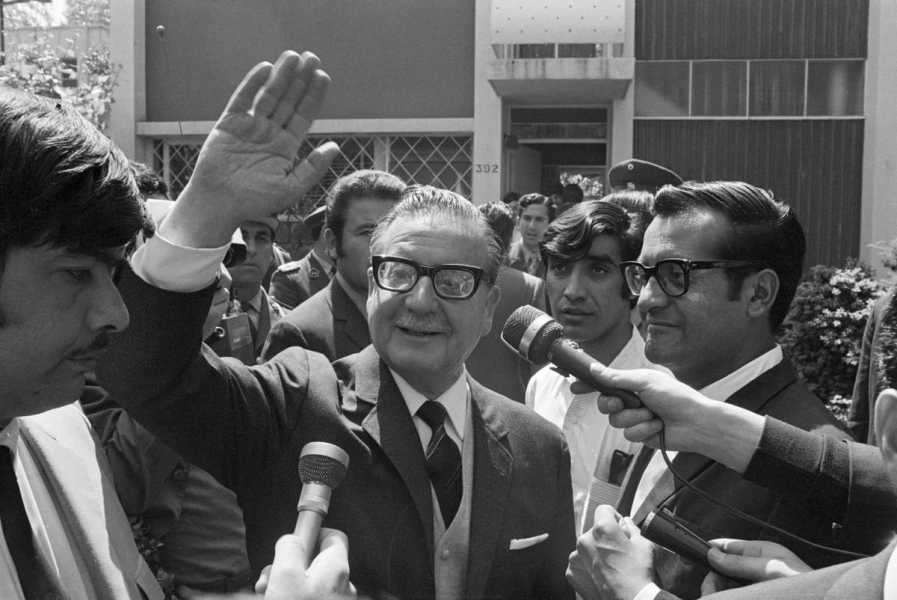
After the democratic election of socialist President Salvador Allende, seen here in 1970, Nixon’s administration gave the CIA unprecedented authority to “save Chile.” Bettmann Archive
Kissinger’s involvement in Chile began in 1970, when Allende won a surprise narrow plurality in the year’s presidential elections. This led to a scramble in DC for plans to avoid Allende’s ascension to office, either through legal political maneuvering or through covert operations like fomenting a military coup. The former, legal option was known in the Nixon government as “Track I”; the latter, to be overseen by then-National Security Adviser Kissinger, was called “Track II.”
As historian Kristian Gustafson explains in an article for the CIA’s Center for the Study of Intelligence, Nixon was fully panicked by the idea of another Marxist government — even one as relatively moderate as Allende’s — in the Western Hemisphere, and gave unprecedented authority to the CIA to take measures necessary to “save Chile.” Track II took shape less than four weeks after the 1970 election, when the CIA (on White House orders, with which Kissinger would have certainly been involved) sent four false-flag officers to Chile to make contact with military officers and reassure them of US support for a coup.
CIA deputy director of plans Thomas Karamessines sent a cable to the agency’s station in Santiago, Chile, during this period in which he summarized Kissinger’s orders thusly: “It is firm and continuing policy that Allende be overthrown by a coup.”
Track II options, it became clear, would involve either retired Gen. Roberto Viaux, an ultra-rightist who was (in Gustafson’s words) “unstable,” or active Gen. Camilo Valenzuela, who was more moderate. The CIA initially opened contact with Viaux but stopped working with him when they determined he had no support in the military. But Gustafson writes, “the pressure on Agency officers in Santiago to come up with a ‘solution’ to the Allende problem was massive.”
One of the first targets of Track II was Gen. René Schneider, the head of the Chilean military and a strong believer in civilian government. Schneider was a key bulwark within the military against coups targeting Allende, and his exile or death was viewed as an essential precondition to ousting Allende. The agency eventually provided submachine guns and tear gas grenades to support a plot by Valenzuela to kidnap Schneider.
Valenzuela tried and failed twice, after which Viaux’s agent successfully murdered Schneider. Both Viaux and Valenzuela were eventually found culpable in Chilean court for their involvement in Schneider’s death, though defenders of Kissinger are quick to note that Valenzuela’s US-backed team did not actually succeed in killing or kidnapping Schneider. “In legal terms, a US judicial proceeding would surely have concluded that US agents (acting on presidential authority) had been at least accessories before the fact,” veteran diplomat and historian William Bundy concludes in his history of Nixon and Kissinger’s foreign policy, A Tangled Web.
Flash forward three years, and the Allende administration was in crisis, with record inflation, escalating conflict bordering on a constitutional crisis with Congress, and widespread strikes (some funded by the CIA), particularly among white-collar workers and businessmen negatively affected by Allende’s nationalization of copper mines.
On September 11, 1973, a group of conservative generals first seized the coastal city of Valparaiso, then moved onto the capital of Santiago; by the afternoon, an aerial and ground assault on the presidential palace had solidified the coup’s success. Allende died (most likely by suicide) after attempting to defend the palace with his aides. The junta swiftly banned Allende’s and allied leftist political parties and began sweeping up tens of thousands of leftists in a wave of repression; some 20,000 people were detained in Santiago’s football stadium. Gen. Augusto Pinochet quickly became the dominant force in the new regime and would rule as a dictator until 1990.
An official government report would later conclude that the repression during Pinochet’s regime resulted in 40,018 people being killed, tortured, or imprisoned on political charges; of those, about 3,065 were killed or forcibly disappeared.
Kissinger has always stridently denied any personal or US government involvement in the 1973 coup, though it’s clear that the US was actively fomenting coup attempts only three years earlier, and was actively funding opposition groups to Allende throughout his presidency. Upon Pinochet’s usurpation of power, the US swiftly recognized and established friendly relations with the new regime.
Peter Kornbluh, the historian and journalist whose declassification efforts have revealed tremendous amounts about US involvement in Chile, concludes in his book The Pinochet File that “By the most narrow definition of ‘direct role’ — providing planning, equipment, strategic support, and guarantees — the CIA does not appear to have been involved in the violent actions of the Chilean military on September 11, 1973.” But, he continues, “the Nixon White House sought, supported, and embraced the coup.” Or, as Kissinger put it in a recorded conversation with Nixon five days after the coup, “We didn’t do it. I mean we helped them. [inaudible] created the conditions as great as possible.”
Kissinger took a similar attitude to the March 24, 1976, overthrow of Argentinian president Isabel Perón by Gen. Jorge Rafaél Videla and other military figures. State Department documents show that a month before the coup, the generals attempted to meet with Kissinger personally, viewing him as a friendly contact. Robert Hill, the American ambassador, discouraged this because of the risk of backlash if the meeting became public, but wrote in an internal cable, “embassy has discreetly and through third parties already indicated to the military that the [US government] will recognize a new government in Argentina.”
“There is no evidence that the US instigated the coup,” Carlos Osorio of the National Security Archive said upon the declassification of important documents from this period. “But the United States accepted, and tacitly supported, regime change because Washington shared the military’s position that the putsch was the only alternative to chaos in Argentina.”
The support continued after the transition to military rule. Even having been warned by adviser William Rogers to “expect a fair amount of repression, probably a good deal of blood,” Kissinger then requested that Congress authorize $50 million in funding for the Argentinian military; it complied.
In June, Kissinger met personally with the junta’s foreign minister, Adm. Cesar Augusto Guzzetti, and told him, “We wish the new government well. We wish it will succeed. We will do what we can to help it succeed … It is a curious time, when political, criminal, and terrorist activities tend to merge without any clear separation. We understand you must establish authority.” He warned, though, “If there are things that have to be done, you should do them quickly.” Kissinger knew at the time that the junta was already engaged in large-scale repression, including murders and disappearances.
Kissinger continued supporting the junta as a private citizen, most notably visiting during the 1978 World Cup as a personal guest of Videla, causing serious problems for the Carter administration’s attempts to pressure the junta to halt the killing.
After Argentina’s return to democracy in 1983, the national government documented at least 8,961 specific deaths and disappearances as part of the junta’s crackdown on dissent. That is almost certainly an undercount, and human rights groups cite death and disappearance tolls as high as 30,000. Famously, many of the disappeared were dropped out of helicopters into the Atlantic Ocean. Videla died in 2013 while in Argentinian prison for his crimes; he had been convicted in three separate trials of torture, kidnapping, and homicide, among other charges.
Henry Kissinger’s good deed: opening China
Kissinger’s tenure in government is largely characterized by support for brutal dictatorships he saw as useful to American interests. In at least one case, this approach to diplomacy resulted in a breakthrough with largely positive consequences: the US opening to the People’s Republic of China.
Much of Kissinger’s positive reputation rests on his central role in back-channel negotiations with the Chinese government in 1971 that culminated in his secret trip to Beijing that year (the first by a senior American official since the Communist takeover in 1949) and President Nixon’s historic visit in 1972. By the Carter administration, the US and China had normalized diplomatic relations. This pivot not only changed the trajectory of the Cold War with the Soviet Union and weakened the latter’s power substantially, but paved the way for a robust trade relationship between the US and China that contributed to the latter’s monumental reduction in extreme poverty in recent decades.
Kissinger no doubt deserves substantial credit for these developments, a point he has made at great length in his own writings. Some caveats are in order, though. For one thing, the opening was a two-way street: China had as much reason, or more, to engage as the US did. It was recovering from the chaos of the Cultural Revolution and in 1969 had nearly faced a war with the Soviet Union. Gaining the US as a strategic partner brought huge advantages. Nixon and Kissinger were hardly unique in seeing this as an opportunity; as journalist and historian James Mann notes, Democratic Sens. Mike Mansfield and Ted Kennedy had previously attempted to visit Beijing to thaw relations, only to have the Nixon administration shut them down.
Further, the exact way that Kissinger reached out has had major negative ramifications for the present day — specifically around Taiwan, and on US-China relations regarding that issue. As the diplomatic historian Nancy Bernkopf Tucker documented, Kissinger was uninterested in the Taiwan question (relative to securing Chinese cooperation on Vietnam and against the Soviets) and so made astonishing concessions on the topic to further negotiations on other fronts. These included a full US military withdrawal from the island, a pledge to never support Taiwan independence, and a conspicuous lack of any demand that China renounce the use of force in retaking the island.
Kissinger’s statements, Tucker concludes, led Chinese leaders to believe that “the Americans would not stand in the way; Taiwan would be theirs.” That this proved untrue, and it became clear the US would resist a retaking of the island, led Beijing to feel betrayed, and helped create the current unsteady equilibrium between the US, China, and Taiwan. It’s unclear whether Kissinger or Nixon could have achieved an opening with China in which the latter accepted Taiwan’s independence, but in any case they did not try.
Kissinger’s ultimate legacy
Kissinger’s time in power touched on nearly every region of the globe and arena of American foreign policy, and he even played a crucial role in the Watergate scandal and the denouement of the Nixon presidency. The president famously addressed his resignation letter to his secretary of state. It is not possible in a single article, even one of this length, to cover his entire career and every policy he touched.
While many of the effects of his decisions were calamitous, Kissinger had a clear and oft-articulate rationale for them. He viewed himself not as a crusader for just causes or as a moralist of any kind, but as a tenacious and tireless guarantor of international stability through the pursuit of a balance of superpowers. Attaining that balance required decisions with large humanitarian tolls, but the prize being won was the United States’ survival and the prevention of great-power war.
As Robert Kaplan, Kissinger’s friend and defender, once wrote, “Henry Kissinger believes that in difficult, uncertain times — times like the 1960s and ’70s in America, when the nation’s vulnerabilities appeared to outweigh its opportunities — the preservation of the status quo should constitute the highest morality.”
This is Kissinger’s defense, and one he had the opportunity to make in countless books, articles, and speeches over the decades. As we contemplate his life upon its end, the question is whether all the carnage was actually necessary for stability and peace — or whether that is just a comforting delusion.
Sourse: vox.com
